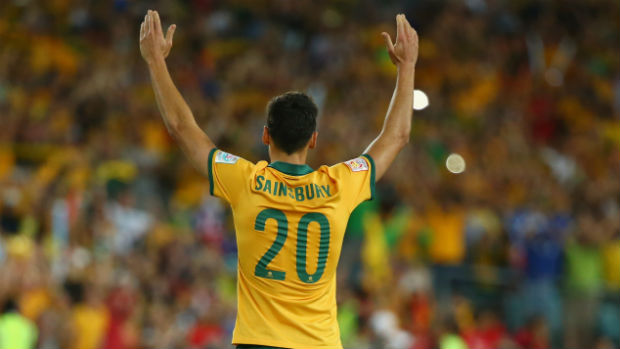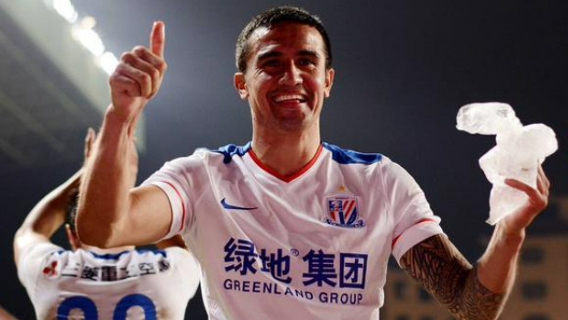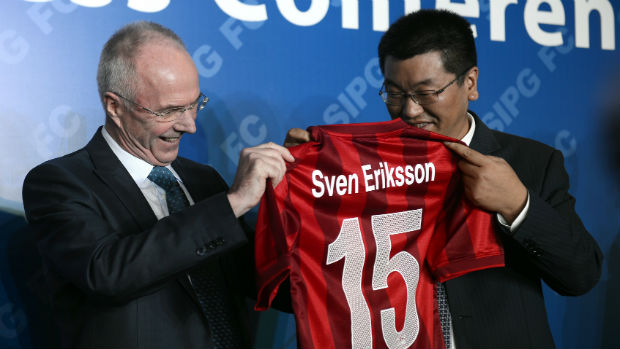Asian football expert @JohnnyDuerden analyses the booming Chinese Super League and why big names globally - including an increasing number of Australians - are flocking to the Middle Kingdom.
The Australian Tennis Open is a long-standing sporting tradition in Melbourne and for the country at large, a chance in January to get right into the new year after the holidays.
It seems however that there may be a new habit developing in football and that is Australian players going to China during the January window.
In the past weeks, it seems that you hardly open a website without seeing the words "transfer news" and confirmation of another move north.
Tim Cahill has obviously been in Shanghai Shenhua for a full season and is in Spain preparing with his teammates for the 2016 Chinese Super League campaign.
Socceroo and Asian Cup hero Trent Sainsbury is now heading north to join ambitious Jiangsu Suning where he will line up with Ramires from Chelsea.

His partner in the centre of the Socceroo defence, the talented Matthew Spiranovic, is with Hangzhou Greentown, Ryan McGowan is with Henan and James Troisi now at Liaoning.
This can only be good thing for Australian football.
The level of Chinese football has been derided over the years but the league has usually been decent.
In recent years it has been improving thanks, in part to the increasingly expensive imports that have been heading the Middle Kingdom.
Cahill will be lining up alongside stars such as Fredy Guarin, just signed from Inter Milan, Mo Sissoko ex-Liverpool and Demba Ba.
The Socceroo star had a successful first season in Shanghai and is popular with the Shenhua fans.

Chinese supporters tend to love the Aussie spirit. Just as Sasa Ognenovski's performances with Seongnam in South Korea caused all manner of K-League teams to look to the A-League, then the qualities of Cahill have encouraged Chinese Super League teams to consider Aussie talent.
And at the moment, China is the place to be and not just in Asia. It's a win-win situation.
Chinese teams get what they want and Australian players get a chance to play with and against an increasing number of top-class stars.
Fans know all about Guangzhou Evergrande, its World Cup winning coach, stars such as Robinho, Paulinho and Ricardo Goulart and a fair proportion of the national team.
They know about how the Cantonese club's twin AFC Champions League successes sandwiched between the 2014 glory of Western Sydney Wanderers.
2015 runner-up Shanghai SIPG has also been spending big. Sven Goran Eriksson has signed Asamoah Gyan and Elkeson for over $50 million and more are set to come.
Newly promoted clubs like Hebei have bought Gervinho from Roma, mid-table teams such as Jiangsu have spent over $30 million on Ramires. I could go on.
Even South Korean fans that have traditionally looked down on Chinese football and not regarded it as a suitable place for top-class K-League talent to play, are having to change their minds.
If you go to China now, you are going to be facing some world-class players and, if you are lucky, playing with them.

Throw in coaches like Scolari, Eriksson, Alberto Zaccheroni, Mano Menezes and Dragan Stojkovic, then again there is a level of international coach seldom seen elsewhere.
For Australian players then, it is an increasingly attractive place to play and that is only going to improve.
Authorities are confident that the league will be the biggest outside Europe sooner rather than later.
The government, the public and private sector are behind it all and there is plenty of money in the world's second largest economy.
It's not going to stop anytime soon and the opportunities are going to grow.
It is like Japan in the mid-nineties. Australian players no longer have to travel halfway across the world to play in one of the most exciting and richest and increasingly significant leagues in the world.
